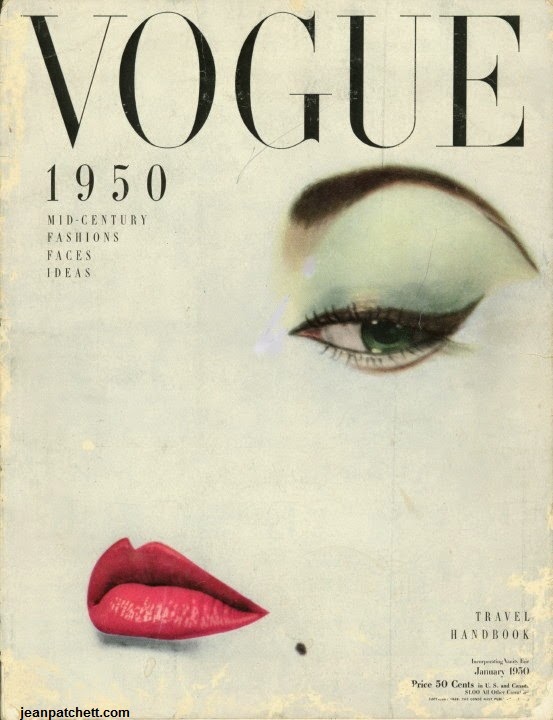Fashion photographer Rankin Rankin reconstructs seven provocative images by the most influential fashion images of the Twentieth Century, he chose seven of his favourite images by the photographers and he takes a journey through a brief history of the fashion photograph. By re-staging iconic images by Cecil Beaton, Erwin Blumenfeld, Richard Avedon, Helmut Newton, Herb Ritts, David Bailey and Guy Bourdin, Rankin exposes the ways in which fashion photography uses fantasy and beauty to communicate something about reality.
Heidi Klum, Erin O'Connor, Jade Parfitt, Sophie Ellis-Bextor, Tuuli Shipster, Mollie Gondhi, Daphne Guinness and David Gandy are the models for Rankin's shoots, while other contributors include David Bailey and Lillian Bassman.
This programme was last shown in 2009 and all the photographs Rankin recreated were shot in 2008. Rankin met some of the photographers them self however as some of the photographers has sadly passed away Rankin found their assistants and family members to talk about there personality and what they were like to work with.
 |
In Rankin's interpretation of the 1955 image of elegant Dovima with Elephants, Erin O'Connor stands in for 1950s aristocratic beauty Dovima, who wore the first Dior dress to be designed by Yves Saint-Laurent.
Picture: RANKIN. HOMAGE TO RICHARD AVEDON - DOVIMA WITH ELEPHANTS 1955

Picture: RANKIN. HOMAGE TO CECIL BEATON - HAT BOX 1934
.jpg)
Guy Bourdin, 1970, Untitled. Rankin chose the fashion designer/socialite/model Daphne Guinness to recreate the iconic look of this image,
.jpg)
Typically classic and timeless, this 1963 image by David Bailey originally featured Jane Shrimpton. Bailey was present at the shooting of this remake, posed for by Rankin's girlfriend Tuuli.
Picture: RANKIN. HOMAGE TO DAVID BAILEY - JEAN SHRIMPTON
.jpg)
.jpg)
.jpg)
Typically classic and timeless, this 1963 image by David Bailey originally featured Jane Shrimpton. Bailey was present at the shooting of this remake, posed for by Rankin's girlfriend Tuuli.
Picture: RANKIN. HOMAGE TO DAVID BAILEY - JEAN SHRIMPTON
.jpg)
British supermodel Jade Parfitt makes a wonderfully angular and androgynous Helmut Newton model in this remake, shot in the original Rue Aubriot in the shadow of Newton's Paris studio.
Picture: RANKIN. HOMAGE TO HELMUT NEWTON - RUE ABRIOT FOR VOGUE 1975

Herb Ritts' original rugged, available mechanic 'Fred with Tires' was more a celebration of muscle and vein than strictly fashion. Nonetheless, Ritts' has almost become a formula for advertising. Model David Gandy poses.

 |
In 1950 Vogue opened the decade with an abstract January cover piece by Erwin Blumenfeld. Model Heidi Klum licks her lips in Rankin's raunchy version of the Vogue cover femme fatale
Picture: RANKIN. HOMAGE TO ERWIN BLUMENFELD - VOGUE VCOVER JANUARY 1950
My favourite photo out of the seven is the January Vogue cover 1950. I think even though there is so little features in the photograph it's still a strong vibrant image. The eyes and the lips are strong and bold with colour, the amazing thing is this photograph is originally shot in black and white and the colour was edited in afterwards. I like like how the face and the whole of the cover is bleached out white fade together this makes it look like the face and page is one. The make up completely represents the 1950s era and the beauty spot reminds me of a Marilyn Monroe look who was also around in that era. The face expression is serious however very beautiful as the lips and the eyes have no expression. The nose has been bleached out from the page however it isn't questionable where the nose is as the eye and lips are so strong and is the focus of the page. The colours and the style of the photograph reminds me of pop art, the make up and features are so on point that it looks like a drawing with the bold but subtle colours. Rankins version is spot on to the original and as he said he wanted a 21st century modern interpretation of the vogue cover. Rankin used model Heidi Klum and in the spur of the moment during the photo shoot she licks her lips and Rankin decided that was the raunchy version he wanted to use. He speaks in the documentary that, that's exactly what he wanted a cheeky 21st century twist on the original.
Here's a link to watch the documentary-
http://rankinfilms.com/documentaries/#v-3552
Photographs-
http://www.telegraph.co.uk/culture/4161221/Rankin-Seven-Photographs-that-Changed-Fashion.html
http://www.bbc.co.uk/programmes/b00gq75c
http://ashleigh-chapman.blogspot.co.uk/2010/03/rankin-seven-photographs-that-changed.html







































